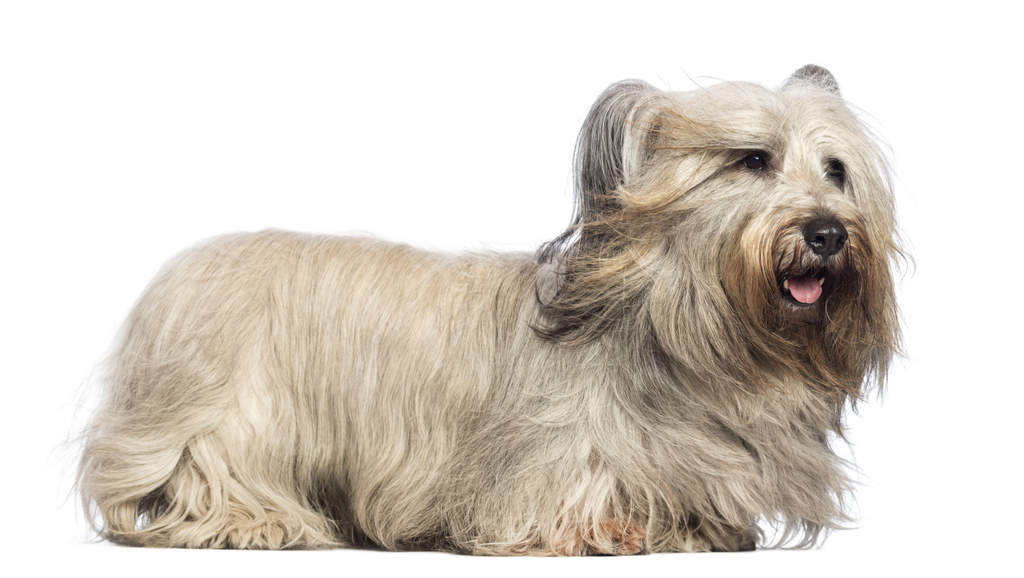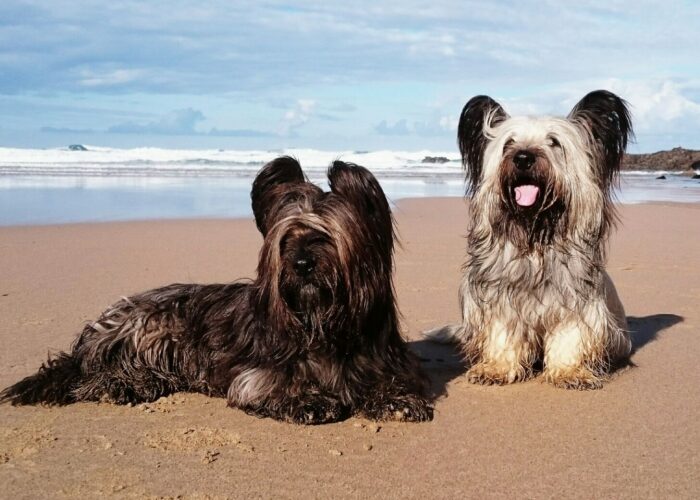The Skye Terrier is a breed of dog that is a long, low, hardy terrier and “one of the most endangered native dog breeds in the United Kingdom” according to The Kennel Club.
Coat
The Skye is double-coated with a short, soft undercoat and a hard, straight topcoat. The shorter hair of the head veils the forehead and eyes, forming a moderate beard. The ears are generally well feathered and, in prick-eared examples, the hair normally falls like a fringe, accenting the form, and blending with the side locks.
Colour
Fawn, blue, dark or light grey, blonde, and black with black points (ears and muzzle) all occur. They may have any self-colour, allowing for some shading of the same colour on the body and a lighter undercoat, so long as the nose and ears are black. There is generally no further patterning on the body, but a small white spot on the chest is relatively common.
Types
Except for the shape and size of the ears, there is no significant difference nor preference given between the prick- and drop-eared types. When prick, they are medium-sized, carried high on the skull and angled slightly outwards.
History
These dogs were found on the Isle of Skye, and the dogs were then named Skye Terriers. Some confusion exists in tracing its history because, for a certain time, several different breeds had the same name “Skye Terrier”. The loyal dog, present under the petticoat of Mary, Queen of Scots at her execution, has been ascribed as a Skye Terrier. In 1840, Queen Victoria made the breed fancy, keeping both drop-(floppy) and prick-(upwards) eared dogs. A colour lithograph of Skye Terriers was included in “The Illustrated Book of the Dog” by Vero Shaw in 1881.
This greatly increased its popularity and the Skye Terrier came to America due to this. The AKC recognized the breed in 1887, and it quickly appeared on the show scene. Its popularity has significantly dropped and now it is one of the least known terriers. There is little awareness of its former popularity.

